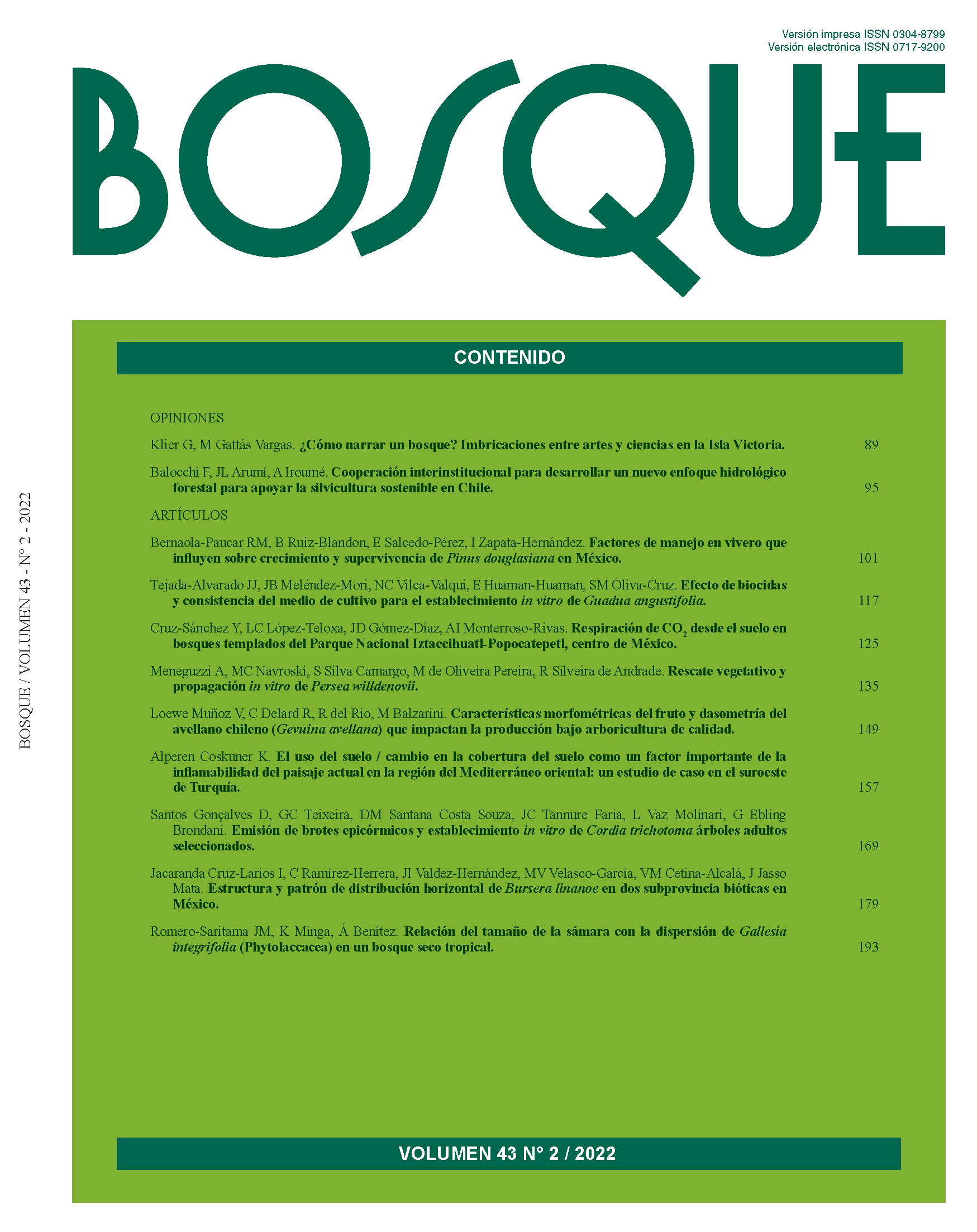Respiration of CO2 from the soil of temperate forests in the Iztaccihuatl-Popocatepetl National Park, Mexico
Main Article Content
Abstract
In temperate forests, climatic and plant species diversity lead to important changes in soil respiration. The objective of this study was to analyze the respiration of the soil from changes in carbon dioxide emitted in a temperate forest in central Mexico to know its spatial and temporal variation. To do this, emissions were measured with a LI-COR continuous flow chamber (LI8100A), in winter and spring and in three forest communities: pine forest; mixed pine, oyamel and aile forest; as well as mixed pine and oyamel forest. Its relationship with vegetation cover, temperature and humidity, both environmental and soil, was explored. Statistical tests were applied to find correlations among variables, ecosystems and soil respiration. Results show that soil respiration varied both seasonally and among the different forest covers evaluated. The winter season was from 1.07 to 2.10 μmol m-2 s-1, higher for the pine forest and lower for the association of pine and oyamel. In the spring it was 1.28 to 5.15 μmol m-2 s-1, higher for the association of pine and oyamel and lower for the pine, oyamel and aile forests. Soil respiration was found to be influenced by vegetation cover, soil temperature and moisture, and weather conditions depending on the season of the year. The information will allow estimating emissions by soil respiration in temperate forests of the country.

